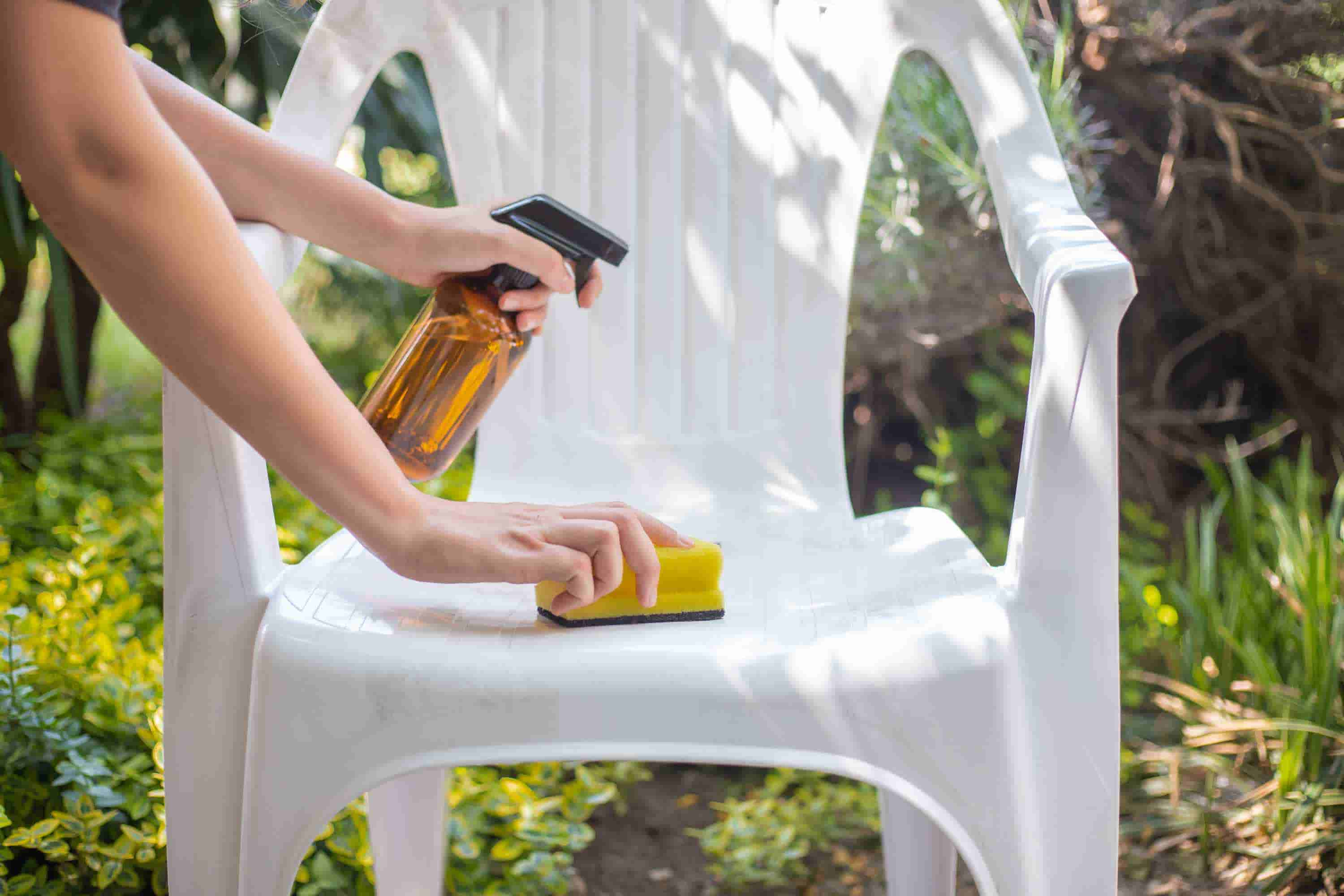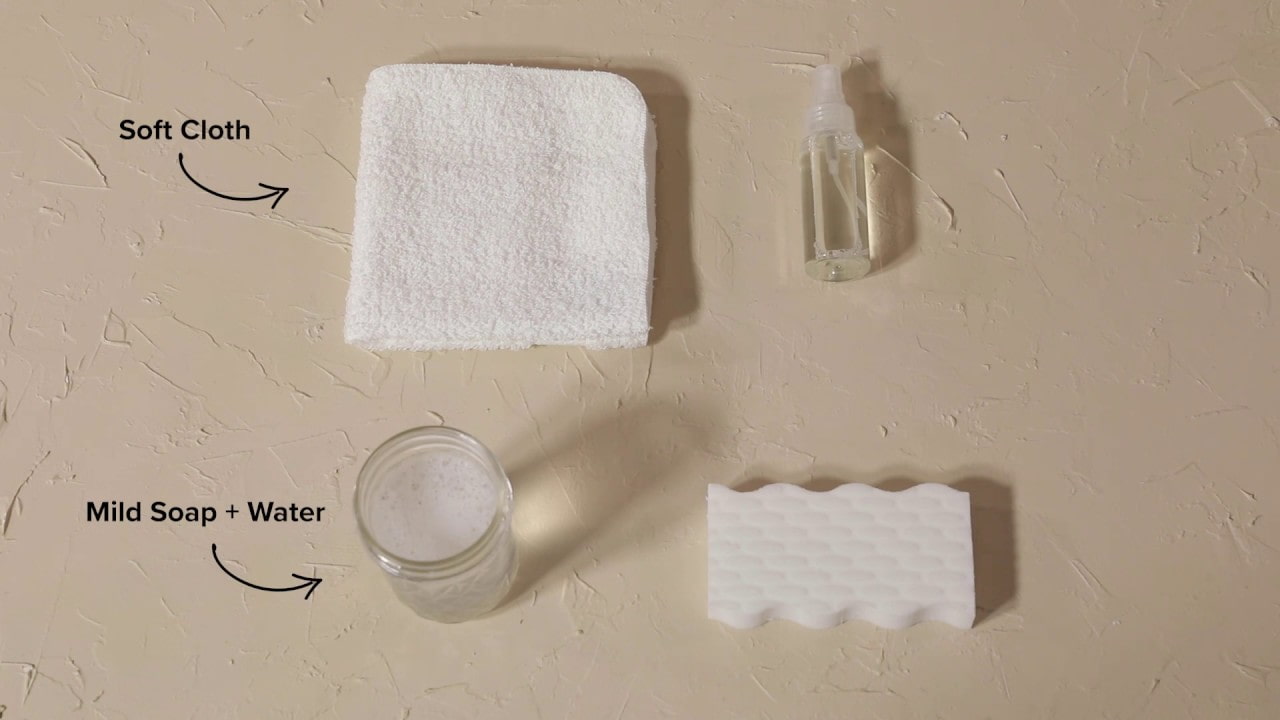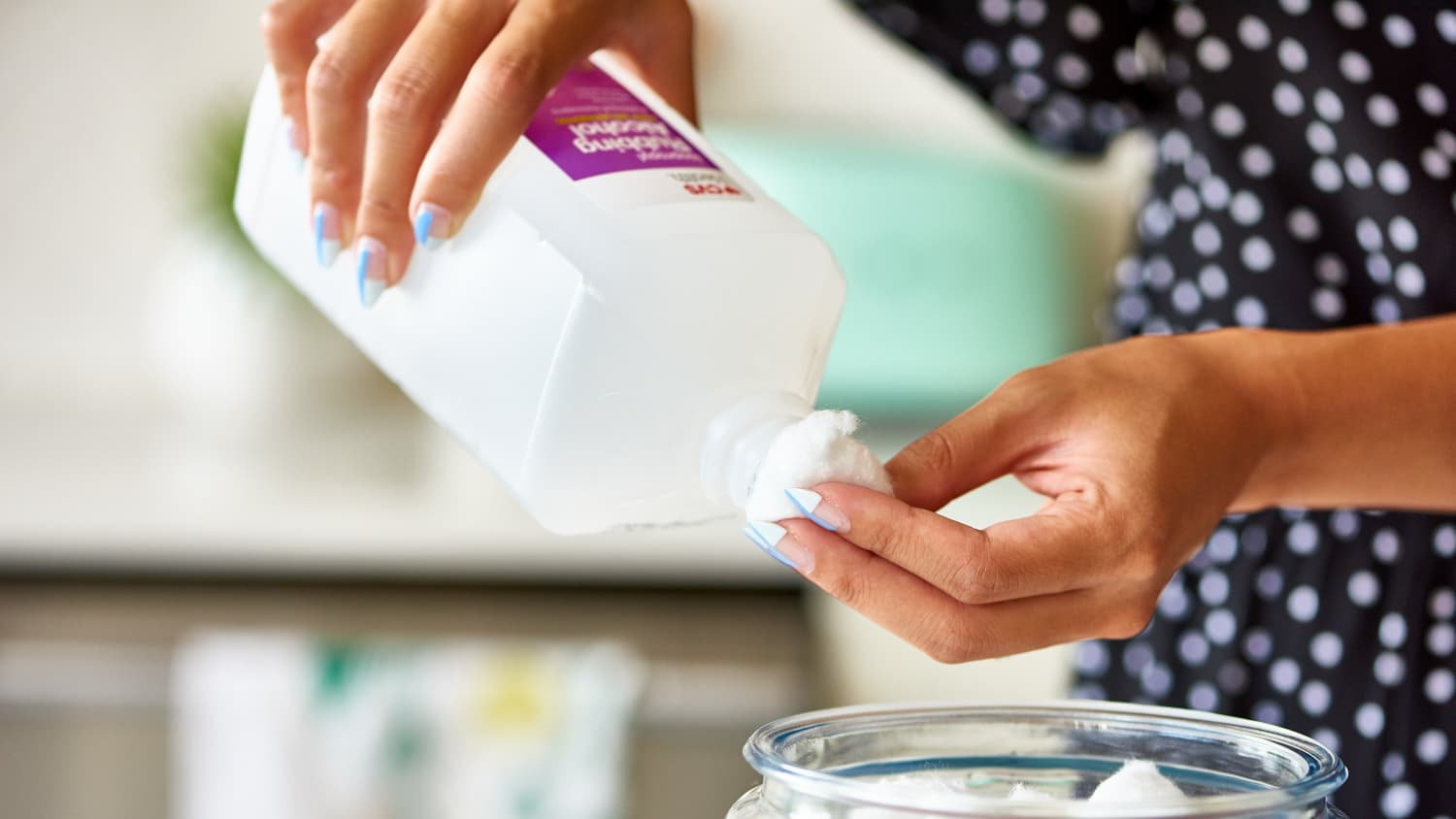Plastics have become integral to our everyday lives, from household items to industrial equipment. However, maintaining plastic materials can be a bit tricky as they are susceptible to scratching, discoloration, or damage if not cleaned properly. In this guide, we’ll dive deep into everything you need to know about cleaning plastics, ensuring they remain durable, clean, and aesthetically appealing for years.
1. Understanding Different Plastics To Clean It
Before diving into the cleaning plastic techniques, it's essential to understand the different types of plastics because each type responds differently to cleaning agents and methods:
1.1. Polyvinyl Chloride (PVC or Vinyl)
PVC, a rigid or flexible plastic, is resistant to chemicals, weathering, and electricity. It’s produced from vinyl chloride, a compound derived from ethylene and chlorine. PVC is utilized for pipes, window frames, wires, cables, medical bags, and tubing. The cleaning tips for this type of plastic are mild soap and water but avoid harsh chemicals that could discolor or weaken the material.
.jpg)
PVC Pipes
1.2. Polystyrene (PS)
Polystyrene (PS) is a hard, brittle, and transparent plastic that can be expanded into a lightweight, insulating material. It is produced from styrene, a liquid hydrocarbon derived from petroleum or natural gas. PS is commonly used for disposable items such as cups, plates, cutlery, egg cartons, and packaging peanuts. The cleaning tips for this type of plastic are also mild dish soap or a mixture of water and vinegar to remove grease and dirt from plastic surfaces.
-(1).jpg)
Objects made from polystyrene (PS)
1.3. Polypropylene (PP)
PP, a tough, heat-resistant, and semi-rigid plastic, boasts a high melting point and good chemical resistance. It’s produced from propylene, a by-product of petroleum refining. PP is used for yogurt cups, margarine tubs, bottle caps, straws, and automotive parts. PP plastic surfaces are easy to clean. If an area is only a little bit dirty, usually a moistened cloth or sponge will do. For anything dirtier, use water with a gentle cleaner. Do not use liquid cleaning agents that scour or are abrasive; this can damage the surface.
1.4. High-Density Polyethylene (HDPE)
HDPE is a resilient, flexible, and opaque plastic known for its resistance to moisture, chemicals, and impact. It’s produced from ethylene, also sourced from petroleum and natural gas. HDPE finds use in milk jugs, detergent bottles, cereal box liners, toys, buckets, and pipes. To clean HDPE plastics, you need to use a soft cloth, all surfaces should be washed with a mild dish-washing liquid soap or powdered detergent and warm water. For very stubborn stains, make a paste with baking soda and water.
.jpg)
HDPE plastic sheets
1.5. Low-Density Polyethylene (LDPE)
Polyethylenes are the most used family of plastics in the world. This type of plastic has the simplest plastic polymer chemical structure, making it very easy and very cheap to process. LDPE is mostly used for bags (grocery, dry cleaning, bread, frozen food bags, newspapers, garbage), plastic wraps, coatings for paper milk cartons, some squeezable bottles (honey, mustard), and food storage containers. They are also used for wire and cable covering.
1.6. Polyethylene Terephthalate (PET or PETE)
This is one of the most commonly used plastics. It’s lightweight, strong, typically transparent and is often used in food packaging and fabrics (polyester). To clean PET plastic, first you have to rinse it with water to remove any loose debris or dirt, then apply a mild dishwashing detergent mixed with warm water to clean the surface. After cleaning the surface, use a soft cloth or sponge to scrub, for stubborn spots, you can use a soft-bristle brush.
.jpg)
PET bottles
1.7. Other Plastic
The best-known plastics of this group are polycarbonates (PC) used to build strong, tough products. Polycarbonates are commonly used for eye protection in the creation of lenses for sunglasses, sport and safety goggles. But they can also be found on mobile phones and more frequently, in CD discs. PC plastic is very easy to clean, just mix your water and soap in a bucket and wash the polycarbonate using a soft sponge or microfiber cloth to avoid scratching the material.
2. Cleaning Plastics: General Cleaning Methods
2.1. Soap and Water
Soap and water are the simplest and most effective methods for cleaning plastics. To clean, mix a few drops of mild dish soap with warm water. Use a soft cloth or sponge to gently wipe the plastic surface, avoiding harsh scrubbing that could damage the material. For tough spots, allow the soap solution to sit for a few minutes before wiping. Rinse thoroughly with clean water to remove any residue, and dry with a clean cloth to prevent streaks. This gentle cleaning method works well for most plastic types and helps maintain their appearance without causing damage.

Soap and water for cleaning plastics
2.2. Vinegar and salt
Vinegar is an excellent choice for cleaning plastic surfaces, thanks to its natural ability to cut through grease and grime while leaving your plastics looking shiny and new without harmful chemical residues. To effectively use vinegar in your cleaning routine, begin by dampening a clean cloth with undiluted white vinegar and gently wiping over the plastic surfaces to remove everyday dirt and buildup.
For more stubborn stains or areas with sticky residues, consider adding a bit of salt to the affected areas before you apply the vinegar. The salt acts as an abrasive, helping to scrub away the grime without scratching the plastic. Allow the mixture of vinegar and salt to sit on the stains for a few minutes, enhancing its ability to break down the dirt effectively.
2.3. Baking Soda
Baking soda is known for its gentle abrasive properties, making it an excellent choice for tackling tough stains on surfaces without causing any scratches. To clean with baking soda, start by mixing a few tablespoons of baking soda with a small amount of water to create a thick paste. Once your paste is ready, apply it directly to the stained areas on the plastic. Use a soft brush or sponge to gently scrub the stain, effectively lifting and removing it through the natural abrasive action of the baking soda, ensuring a thorough clean without damaging the material.

Baking Soda
2.4. Non-Abrasive Cleaners
Non-abrasive cleaners are ideal for cleaning plastic surfaces without causing scratches or damage. To use a non-abrasive cleaner, apply a small amount of the product to a soft cloth or sponge, then gently wipe the plastic surface.
For stubborn dirt, let the cleaner sit on the surface for a few minutes before wiping it off. Always rinse the plastic thoroughly with clean water afterward to remove any residue. Non-abrasive cleaners are particularly useful for maintaining the appearance and longevity of plastics used in household items, electronics, and outdoor furniture.

Using non-abrasive cleaners to clean plastic chairs
2.5. Isopropyl Alcohol
Isopropyl alcohol is particularly effective in cleaning sticky residues from labels, tapes, or spills on surfaces. To utilize this method, begin by applying a small amount of isopropyl alcohol onto a cloth or paper towel. Proceed by gently rubbing the affected area on the plastic. The alcohol works quickly to dissolve the adhesive or sticky substance, allowing for easy removal without requiring excessive force or scrubbing, which could potentially damage the surface.
2.6. Bleach
Add 1 tablespoon bleach to each cup of water you have. You can make the solution in a sink, a container, or a bathtub. After that, submerge the plastic in the bleach and water solution for 5 to 10 minutes. Make sure the plastic is completely covered in the solution then remove any caked on dirt or grime by rubbing the item with a sponge. Finally, rinse the plastic with water to remove the bleach solution. Air dry the plastic by letting it sit out for about 30 minutes or until completely dry.
3. Specific Cleaning Techniques for Different Plastics
Different types of plastics have unique chemical compositions, which means they require distinct cleaning techniques to avoid damage and maintain their appearance and integrity. Below are some common plastics and the appropriate cleaning methods for each type.
3.1. Cleaning HDPE
- Cleaning Technique: For regular cleaning, use mild dish soap and warm water. Avoid abrasive cleaners or scrubbers as they can scratch the surface. If the plastic has stubborn stains or dirt, try a solution of baking soda and water. Create a paste and gently scrub with a non-abrasive sponge. Rinse with clean water to remove all residues.
- Precaution: Avoid using harsh solvents or strong chemicals, like bleach or acetone, as they can weaken the material over time.

Mild soap and water for cleaning plastics
3.2. Cleaning PVC
- Cleaning Technique: For PVC, mild soap and water are usually sufficient. Use a soft cloth or sponge to wipe down the surface. If needed, a diluted solution of vinegar can help remove tough grime or mineral buildup, especially for outdoor PVC materials like pipes or furniture.
- Precaution: Avoid using bleach, as it can discolor PVC. Solvents like acetone should also be avoided, as they can degrade the plastic over time.
3.3. Cleaning PS
- Cleaning Technique: For PS, an alcohol-based solution should be utilized to remove stubborn dirt. But you can also use soapy water and a soft cloth to clean.
- Precaution: Polystyrene can easily be degraded by strong solvents.

Using alcohol for cleaning plastics
3.4. Cleaning PP
- Cleaning Technique: For PP, you can utilize gasoline to clean by using a soft cloth soaked in a little gasoline or kerosene, rubbing it around the area with stains, scratches, or dirt, and the plastic will immediately become shiny and clean again.
- Precaution: When cleaning plastics with gasoline or kerosene, be sure to keep them away from open flames, as these are highly flammable substances. Avoid soaking the items for too long, as the chemicals can penetrate and negatively impact the lifespan of the objects.
4. Conclusion
In conclusion, knowing how to clean plastics effectively is crucial to maintaining their appearance and functionality. By identifying the type of plastic and using the correct cleaning agents, you can ensure that your plastic items remain in pristine condition for years to come. Whether you’re working with household plastics, industrial components, or even delicate acrylic, following the recommended cleaning practices will extend the life of your plastic materials.
5. About EuroPlas
EuroPlas is one of the world’s leading manufacturers of masterbatch and additives, known for providing high-quality plastic raw materials, including
bioplastic compounds,
color masterbatch,
plastic additives,
engineering plastic compounds,
filler masterbatch and
bio filler. EuroPlas is committed to delivering customized solutions tailored to meet specific customer needs, ensuring top-tier quality and performance. With advanced technology and an experienced team, EuroPlas continues to drive sustainable growth in the global plastics market, contributing to innovative and eco-friendly material solutions.
For more information and samples, please contact us
HERE!